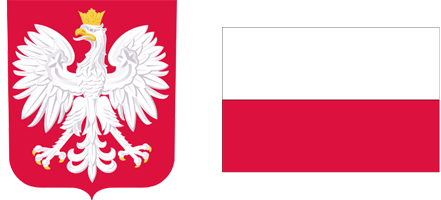Spiny fruits revealed by nano-CT scanning:
Pseudoanacardium peruvianum (Berry) gen.
et comb. nov. from the early Oligocene
Belén flora of Peru
1
Florida Museum of Natural History, Dickinson Hall, P.O. Box 117800, Gainesville, Florida, U.S.A
2
University of Nevada, Department of Geological Sciences & Engineering, 1664 N. Virginia Street,
Reno, NV 89557-0172, U.S.A.
Online publication date: 2018-06-19
Publication date: 2018-06-19
Acta Palaeobotanica 2018; 58(1): 41-48
ABSTRACT
Fossil fruits formerly described as cashews from the Oligocene of Peru are reinvestigated based
on the original specimens and newly collected materials. The recovery of an outer spiny layer, preserved in the
sedimentary molds surrounding the locule casts, indicates that these disseminules do not represent Anacardium.
Imagery from nano-CT scans of the specimens documents a distinctive morphology which does not resemble any
fruits or seeds of Anacardiaceae. We describe the morphology in more detail and reassign the fossils to an extinct
genus, Pseudoanacardium gen. nov., of uncertain familial affinity. Pseudoanacardium peruvianum (Berry) comb.
nov. was a prominent member of the Belén carpoflora, which also included palms plus Annonaceae, Euphorbiaceae,
Humiriaceae, Leeaceae, Icacinaceae, Rutaceae and Vitaceae.
REFERENCES (13)
1.
Berry E.W. 1924. An Oligocene cashew nut from South America. Am. J. Sci., 8: 123–126.
2.
Berry E.W. 1927. Petrified fruits and seeds from the Oligocene of Peru. Pan-Am. Geol., 47: 121–132.
3.
Berry E.W. 1929. Early Tertiary fruits and seeds from Belén, Peru. Johns Hopkins Univ. Stud. Geol., 10: 139–172.
4.
DOWeld A.B. 1996. Sapindaceae: 317–339. In: Takhtajan A., & M. Danilova (eds), Anatomia Seminum Comparativa vol 5. Dicotyledones. Rosidae I. Saint Petersburg.
5.
Herrera F., Manchester S.R., Vélez-Juarbe J. & Jaramillo C. 2014. Phytogeographic history of the Humiriaceae (Part 2). Int. J. Plant Sci., 175(7): 828–840.
6.
Herrera F., Manchester S.R., Jaramillo C., MacFadden B. & da Silva-Caminha S.A. 2010. Phytogeographic history and phylogeny of the Humiriaceae. Int. J. Plant Sci., 171(4): 392–408.
7.
JACQUES F.M.B. 2009. Survey of menispermaceous endocarps. Adansonia, sér. 3, 31(1): 47–87.
8.
Manchester S.R., Wilde V. & Collinson M.E. 2007. Fossil cashew nuts from the Eocene of Europe: Biogeographic links between Africa and South America. Int. J. Plant Sci., 168(8): 1199–1206.
9.
Manchester S.R., Herrera F., Fourtanier E., Barron J. & Martinez J.-N. 2012a. Oligocene age of the classic Belén fruit and seed assemblage of north coastal Peru based on diatom biostratigraphy. J. Geol., 120(4): 467–476.
10.
Manchester S.R., Chen I. & Lott T.A. 2012b. Seeds of Ampelocissus, Cissus, and Leea (Vitales) from the Paleogene of western Peru and their biogeographic significance. Int. J. Plant Sci., 173(8): 933–943.
11.
Sorensen A.E. 1986. Seed dispersal by adhesion. Ann. Rev. Ecol. Syst., 17: 443–463.
12.
Stull G.W., Herrera F., Manchester S.R., Jaramillo C. & Tiffney B.H. 2012. Fruits of an “Old World” tribe (Phytocreneae; Icacinaceae) from the Paleogene of North and South America. Syst. Bot., 37(3): 784–794.
13.
Woodcock D.W., Meyer H.W. & Prado Y. The Piedra Chamana fossil woods (Eocene, Peru). Int. Assoc. Wood Anat. J., 38: 313–365.
CITATIONS (6):
1.
19-Million-Year-Old Spondioid Fruits from Panama Reveal a Dynamic Dispersal History for Anacardiaceae
Fabiany Herrera, Mónica Carvalho, Carlos Jaramillo, Steven Manchester
International Journal of Plant Sciences
Fabiany Herrera, Mónica Carvalho, Carlos Jaramillo, Steven Manchester
International Journal of Plant Sciences
2.
First Fossil Fruit of Mallotus Lour. (Euphorbiaceae) from the Early Eocene Lignite Mine of Rajasthan, India
Anumeha Shukla, R. Mehrotra
Journal of the Geological Society of India
Anumeha Shukla, R. Mehrotra
Journal of the Geological Society of India
3.
Morphology and Systematic Affinities of Platanus dissecta Lesquereux (Platanaceae) from the Miocene of Western North America
Indah Huegele, Robert Spielbauer, Steven Manchester
International Journal of Plant Sciences
Indah Huegele, Robert Spielbauer, Steven Manchester
International Journal of Plant Sciences
4.
Newly Recognized Diversity in Trochodendraceae from the Eocene of Western North America
Steven Manchester, Kathleen Pigg, Zlatko Kvaček, Melanie DeVore, Richard Dillhoff
International Journal of Plant Sciences
Steven Manchester, Kathleen Pigg, Zlatko Kvaček, Melanie DeVore, Richard Dillhoff
International Journal of Plant Sciences
5.
Belenocarpa tertiara (Berry) gen. et comb. nov. (Euphorbiaceae): Fossil Fruits with Carunculate Seeds from the Oligocene of Peru
Ashley Hamersma, Fabiany Herrera, Kenneth Wurdack, Steven Manchester
International Journal of Plant Sciences
Ashley Hamersma, Fabiany Herrera, Kenneth Wurdack, Steven Manchester
International Journal of Plant Sciences
6.
An Eocene leaf flora from the northern Peruvian Andes
Sarah Allen, Kelly Martin, Herbert Meyer, Deborah Woodcock
Review of Palaeobotany and Palynology
Sarah Allen, Kelly Martin, Herbert Meyer, Deborah Woodcock
Review of Palaeobotany and Palynology
We process personal data collected when visiting the website. The function of obtaining information about users and their behavior is carried out by voluntarily entered information in forms and saving cookies in end devices. Data, including cookies, are used to provide services, improve the user experience and to analyze the traffic in accordance with the Privacy policy. Data are also collected and processed by Google Analytics tool (more).
You can change cookies settings in your browser. Restricted use of cookies in the browser configuration may affect some functionalities of the website.
You can change cookies settings in your browser. Restricted use of cookies in the browser configuration may affect some functionalities of the website.


